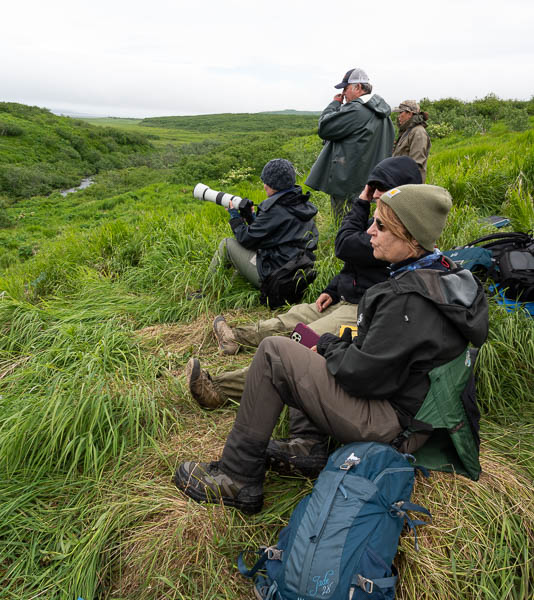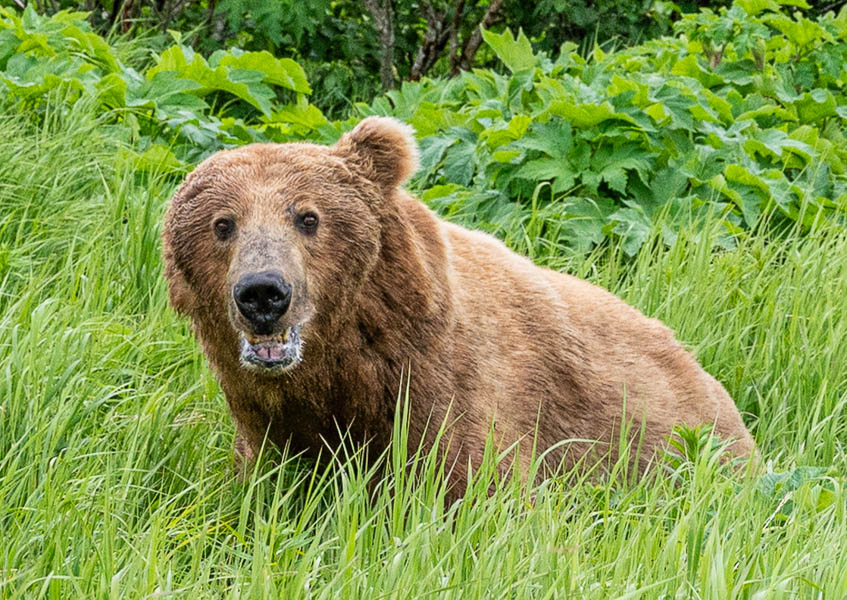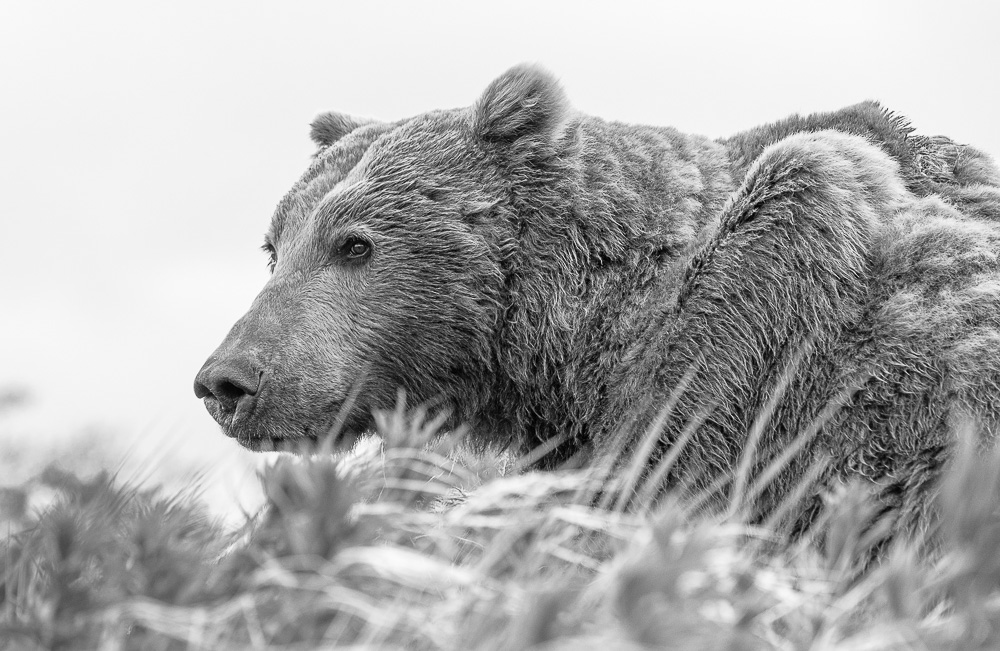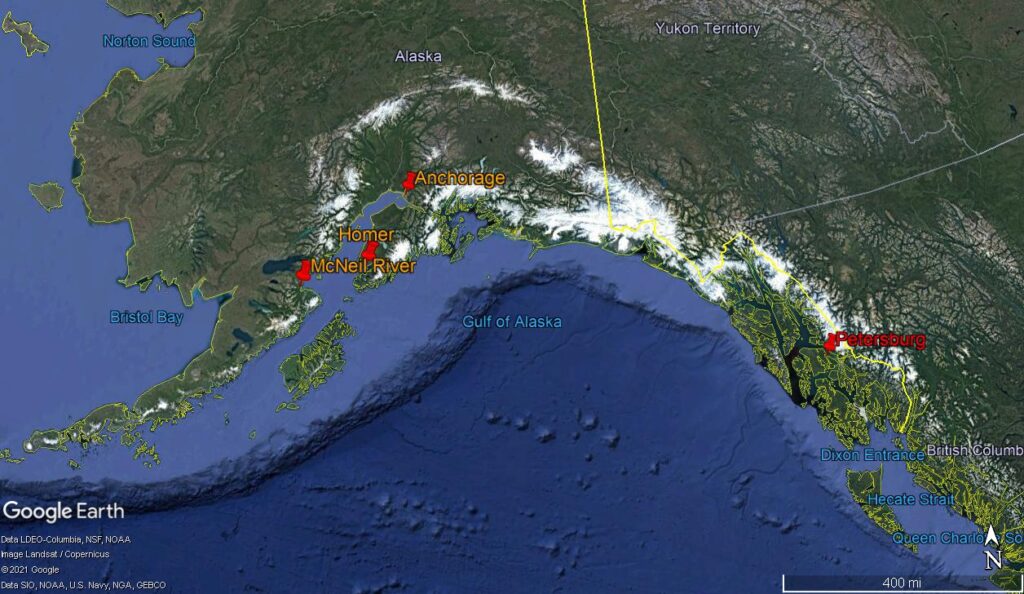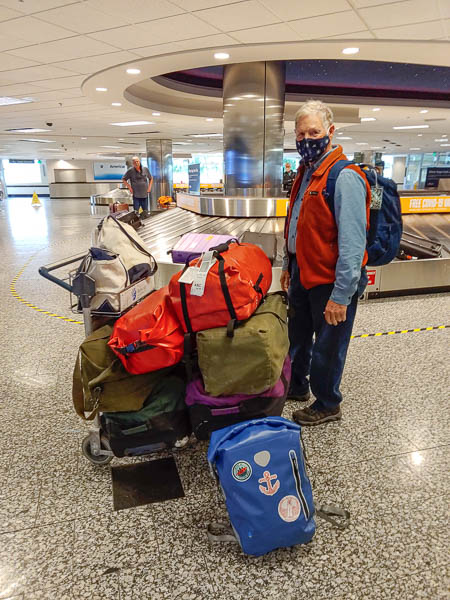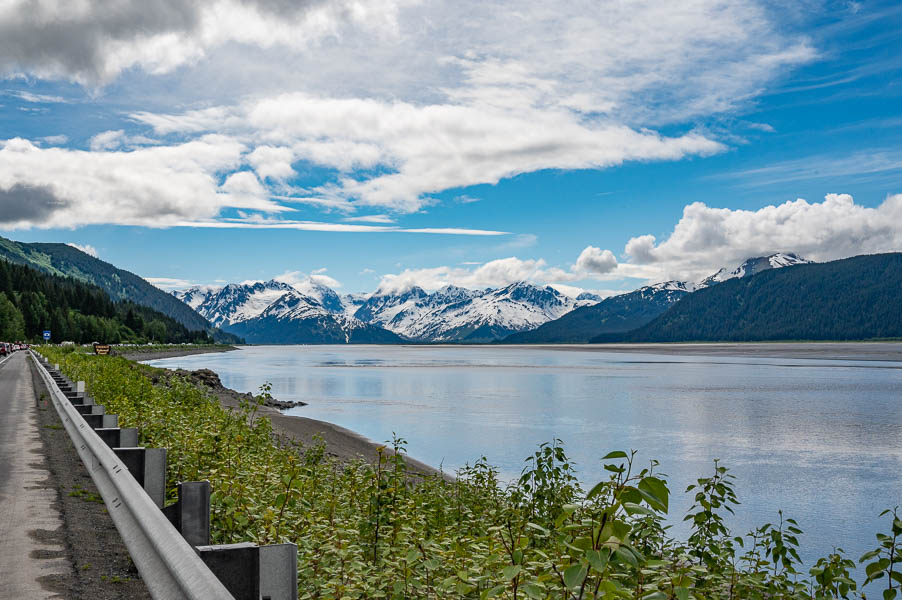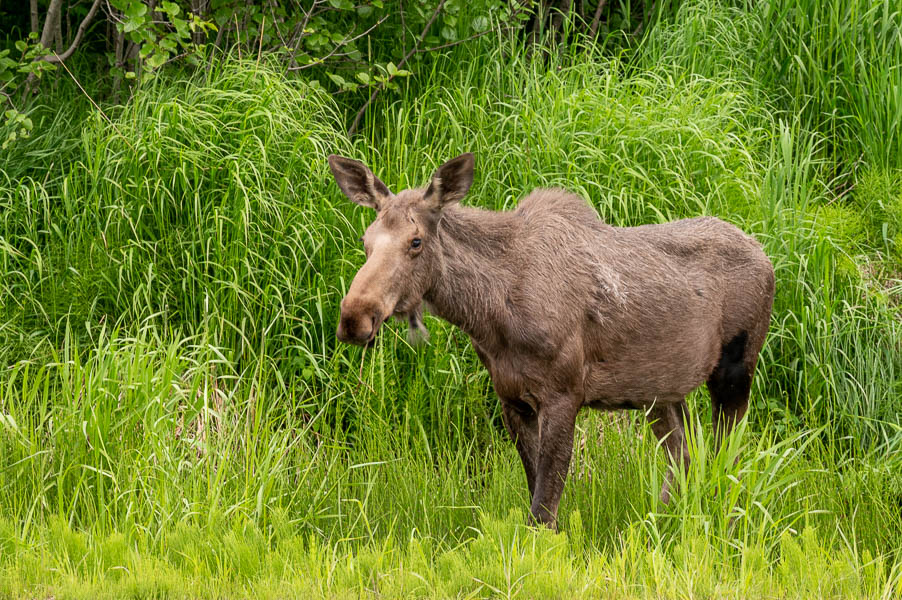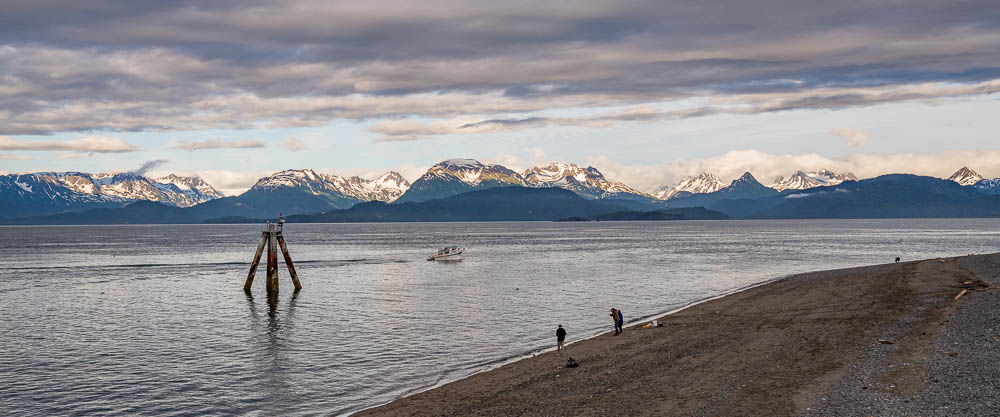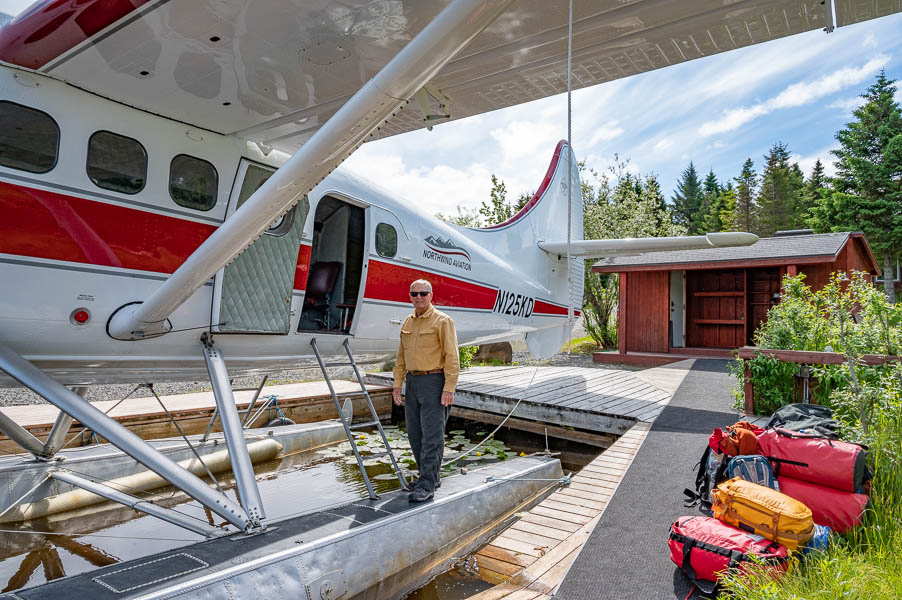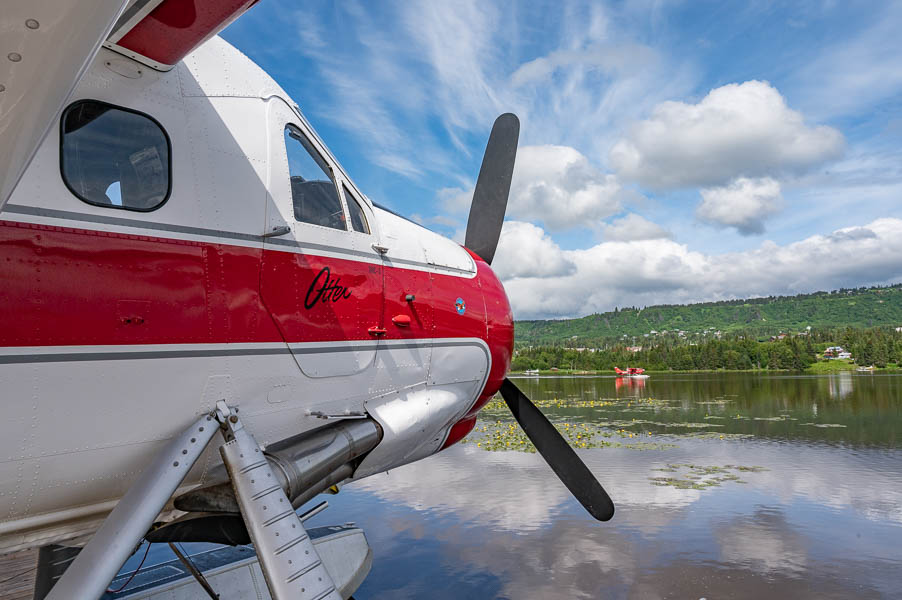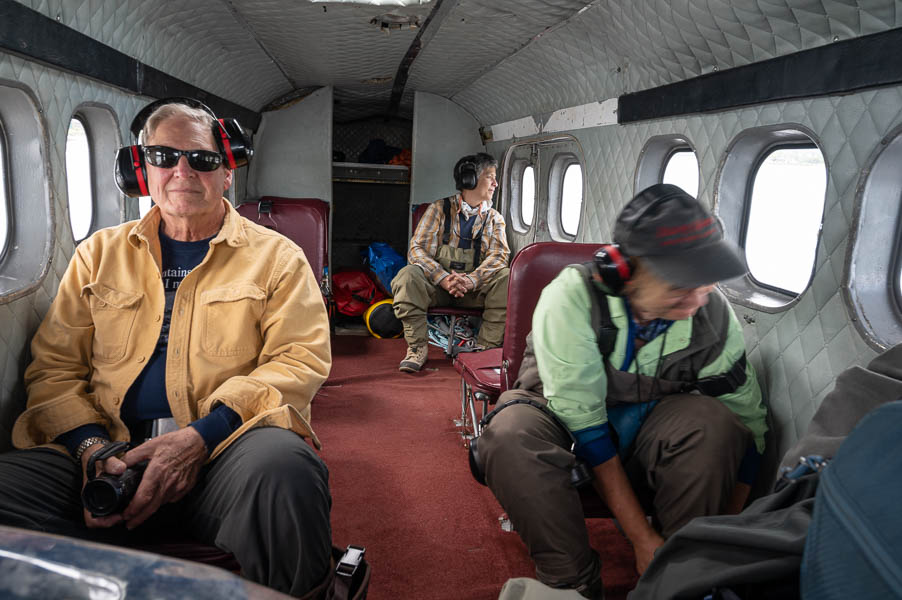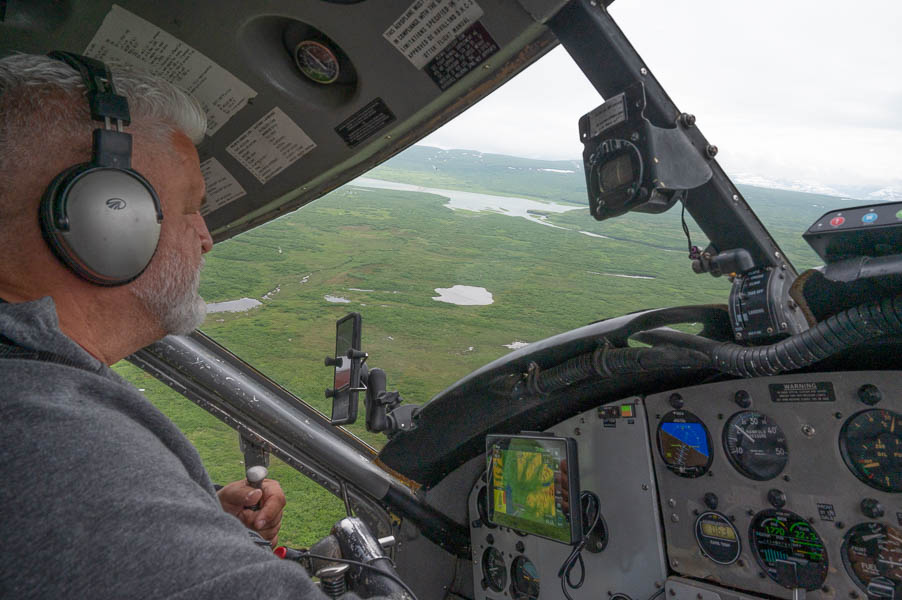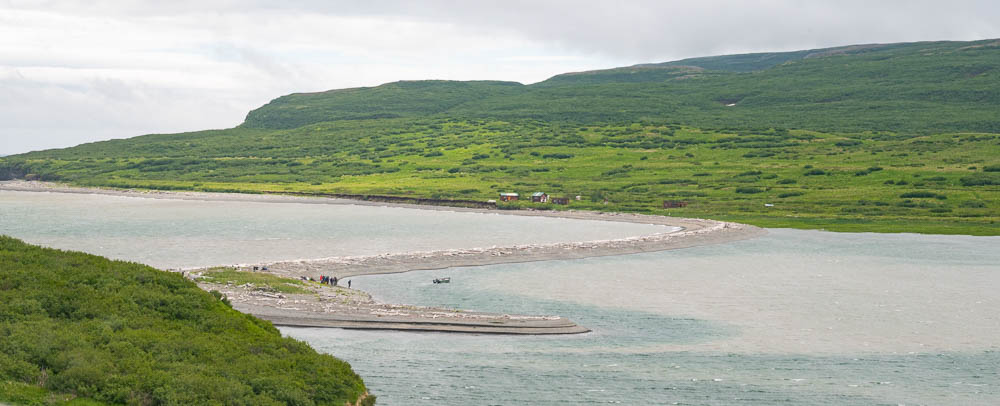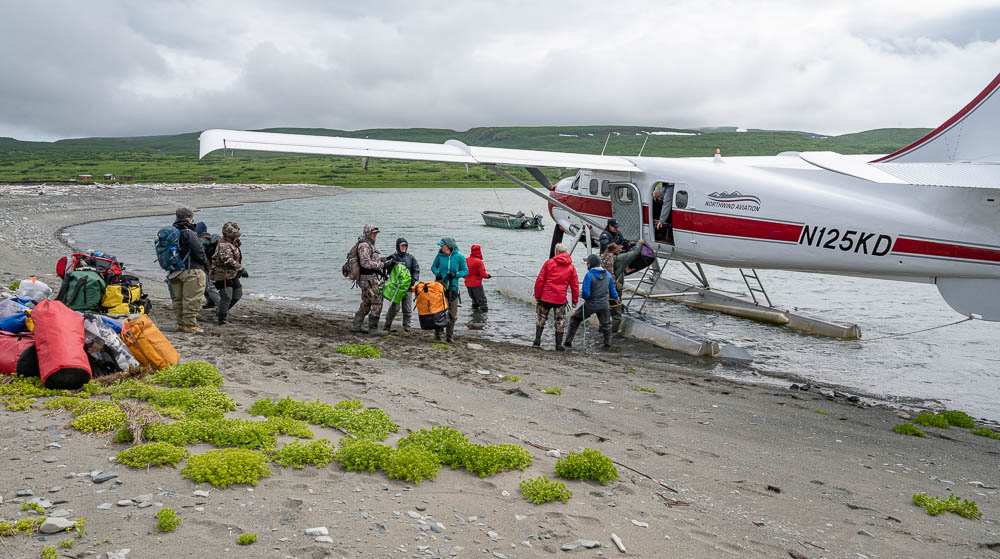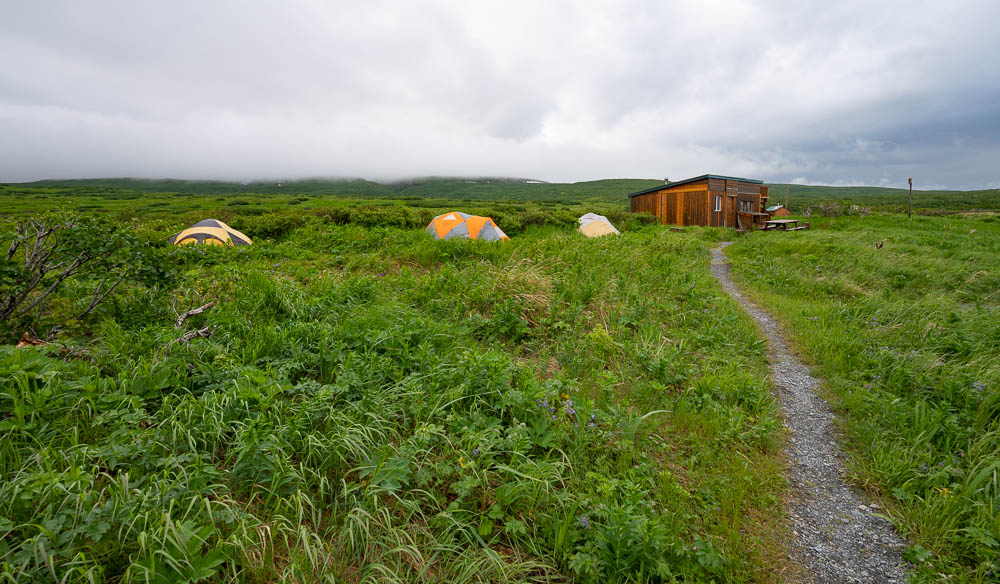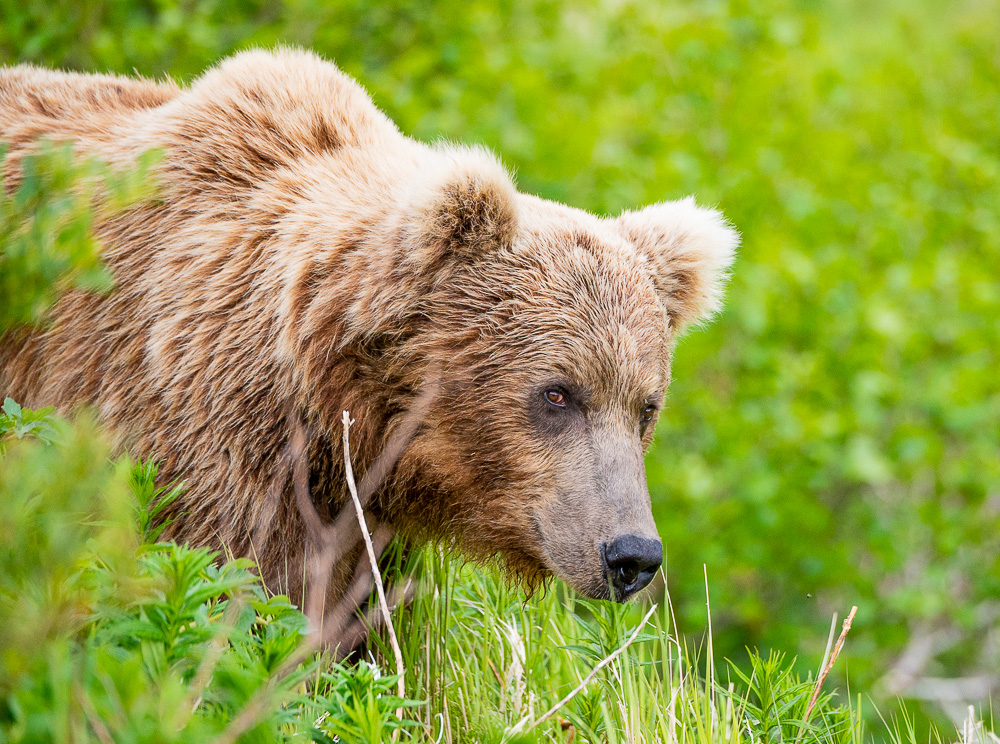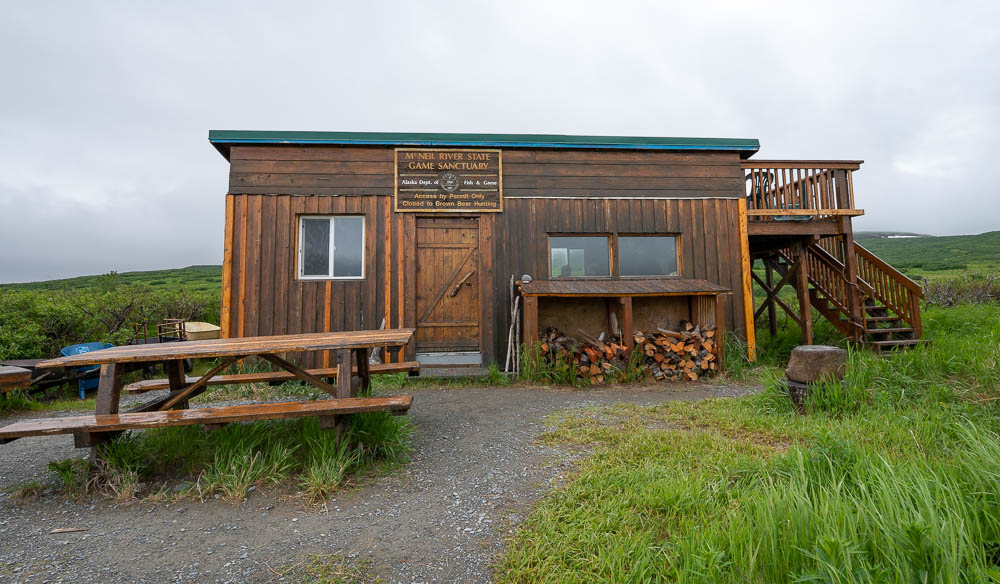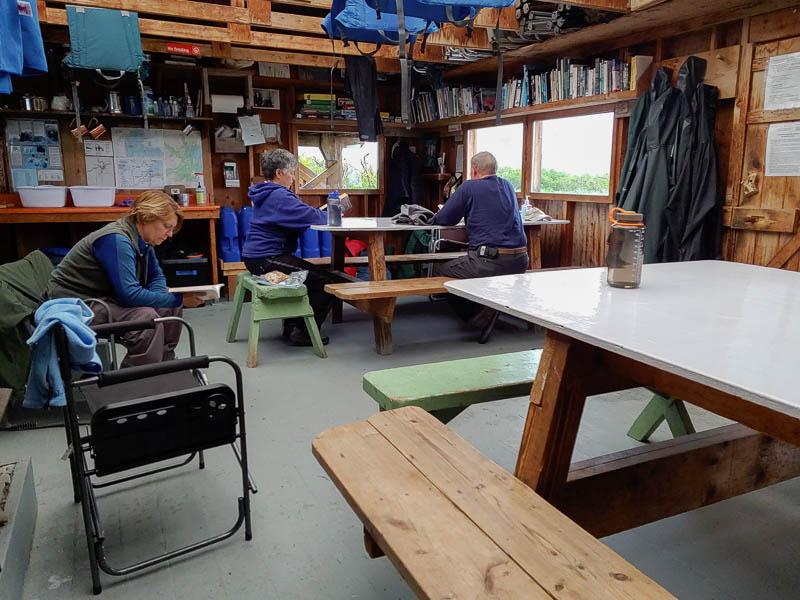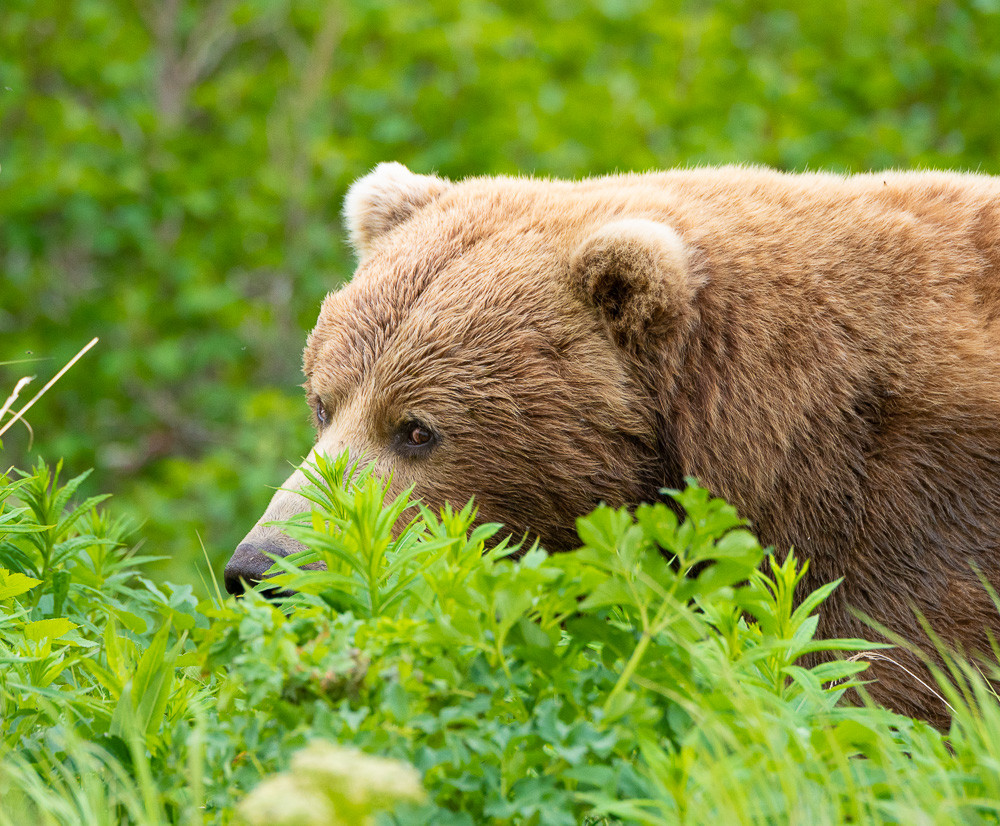Ursus arctos is the scientific name for brown bears. Grizzly bears are a type of brown bear, but they’re smaller than the coastal brown bears we have on the Alaskan coasts – here in southeast where we live, and here at McNeil River. Coastal brown bears have a much richer food source (salmon), and these bubbas get pretty big eating all that fish.
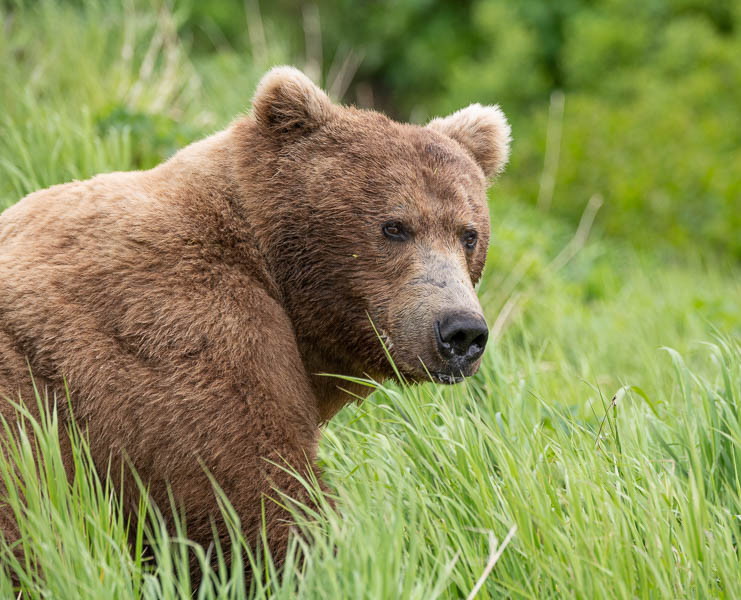
First, we have to get to where the bears are… and that means a two mile hike in our hip or chest waders through mud, bear poop and tall grasses, up slick hills and through slippery streams – carrying all the cameras and gear we need for the long day in changeable weather.
At the end of June, the bears congregate at a small waterfall on Mikfik Creek where there’s an early run of sockeye salmon – an appetizer for the bigger run of chum salmon that will come into nearby McNeil River a couple of weeks later. We settled on a knoll just above the falls to watch a variety of bear behaviors, able to see our camp waaaaaay in the distance.
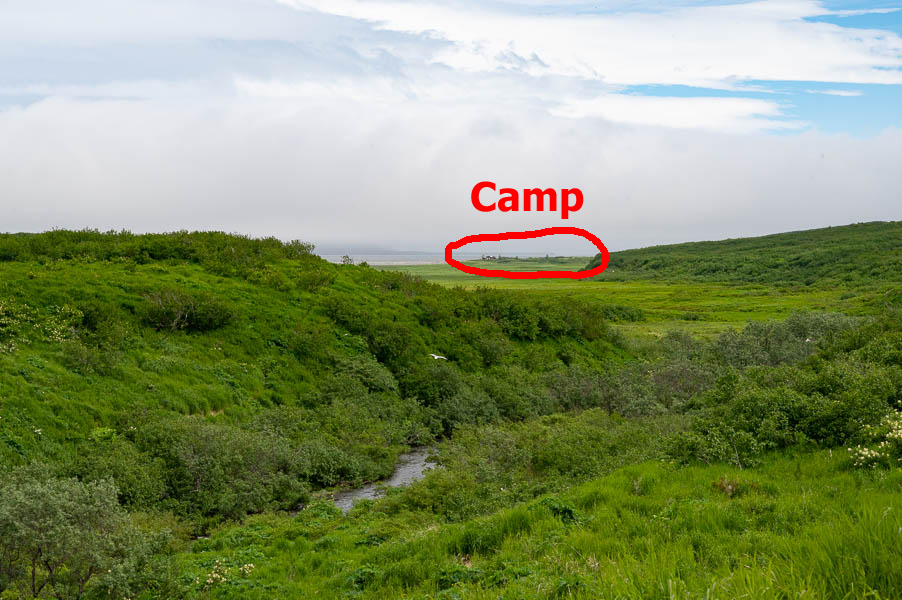
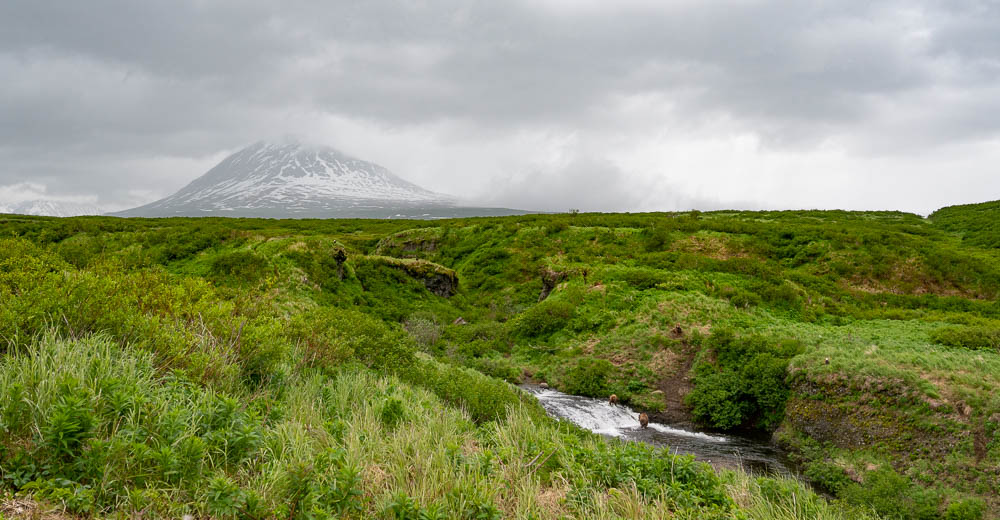
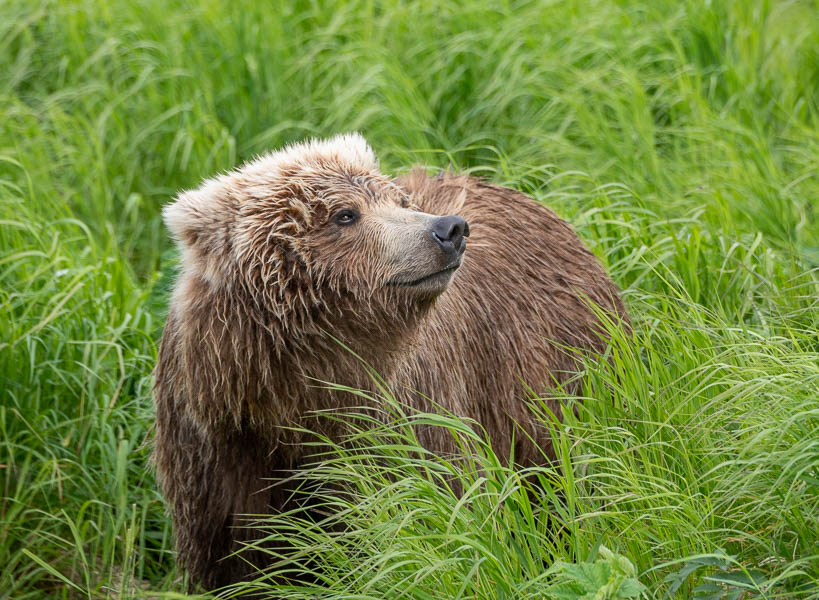
We’re used to seeing bears fishing, but it was interesting to see males following females, consorting and mating. Sometimes a female wasn’t interested in a particular male, yet the male persisted even when the female kept running away. A male might follow a female for several days before mating, and females typically mate with multiple males. On our first hike up the hill, we had to stop because there was a pair mating about 20′ up the hillside above us.
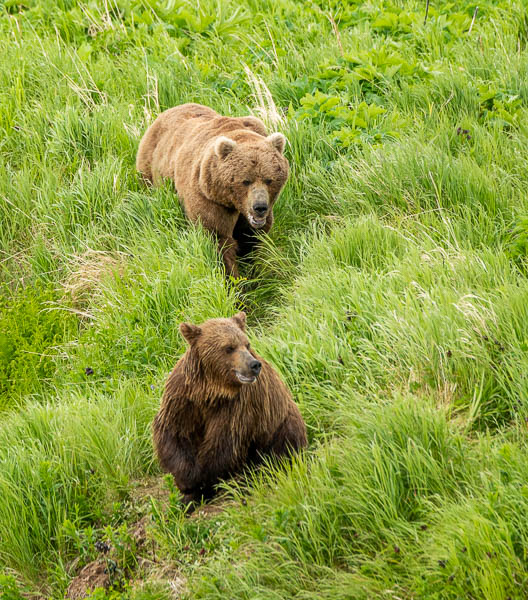
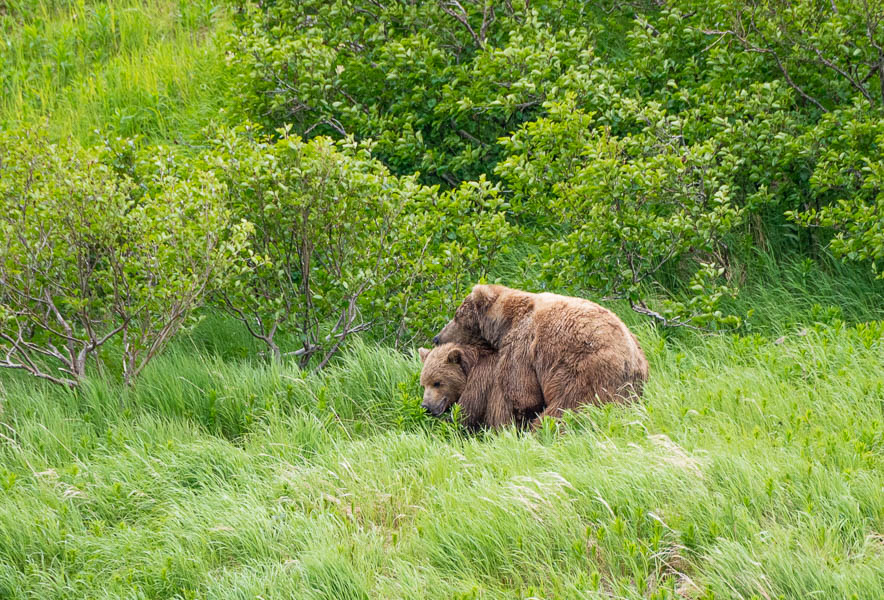
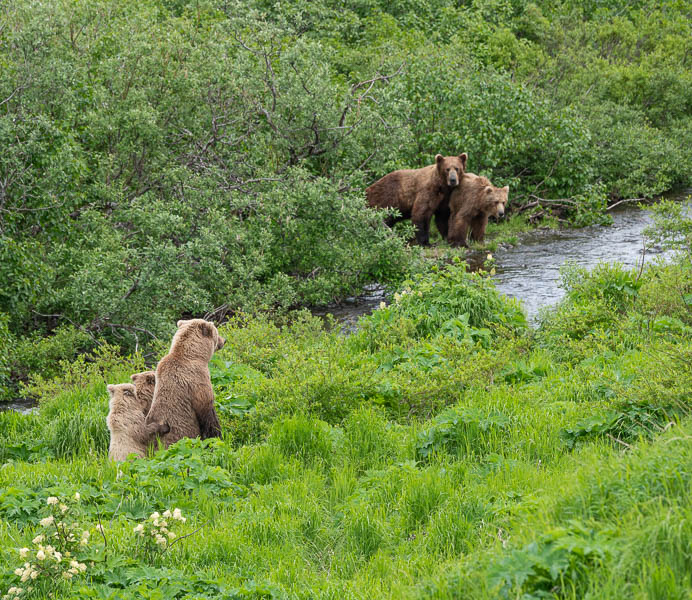
All this activity was going on around us – in or next to the stream and waterfall, on the hillside across the way, or in the tall grass next to us.
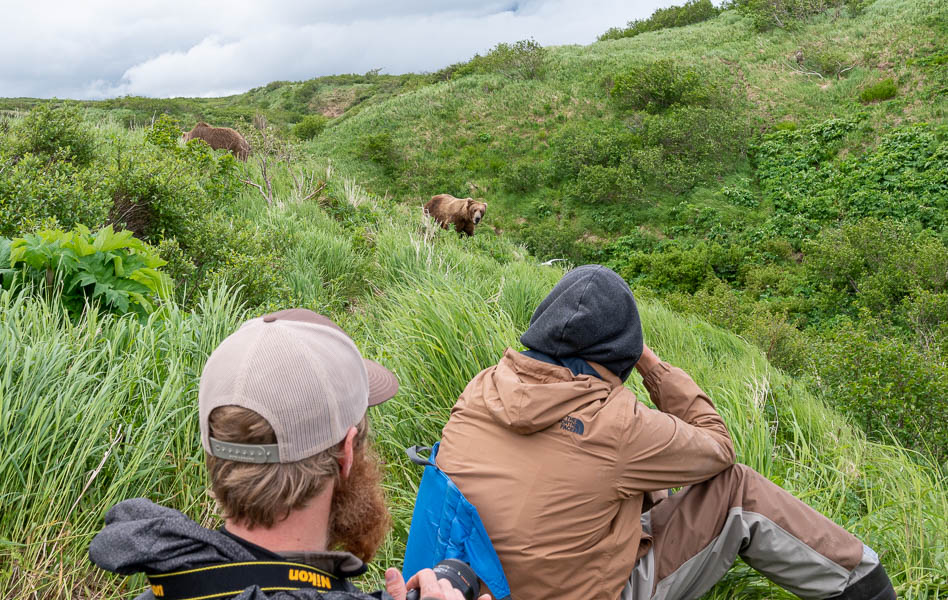
Fighting is another type of behavior we haven’t seen before – generally bears tend to avoid conflict. In many of the places we go to watch bears, the population is predominately females (sows) and cubs. We’ve witnessed an occasional growl or a little jawing between sows, but males (boars) will sometimes engage in a genuine fight, and that is a sight to see! In fact, you might make be able to guess whether a mature adult bear is a male or female based on the presence or absence of battle scars.
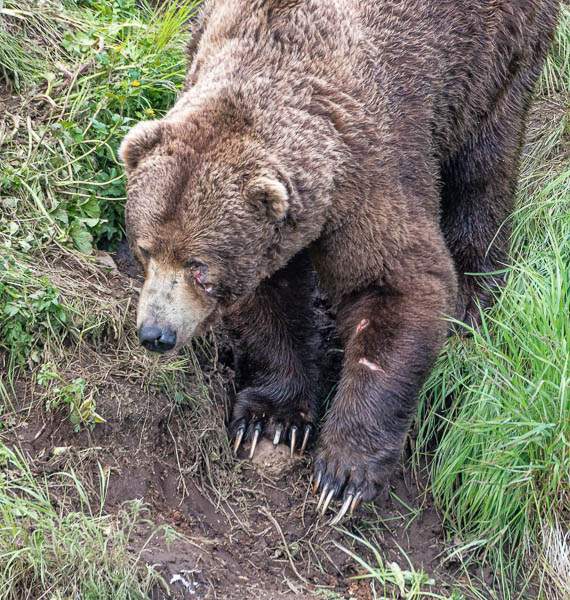
Bears have a social order, and the small area of the falls at Mikfik Creek meant that less dominant bears were always keeping a wary eye out for bigger bears. As soon as one of the big males ambled down the hill, the sub-adults and sows scattered quickly. Other mature males might slowly move to a different spot, especially if the two males had tangled in the past. When two dominant males wanted to be in the falls at the same time, they lowered their heads and walked in a stiff-legged John Wayne cowboy style. Often that was enough for the bears to figure out who the alpha was.
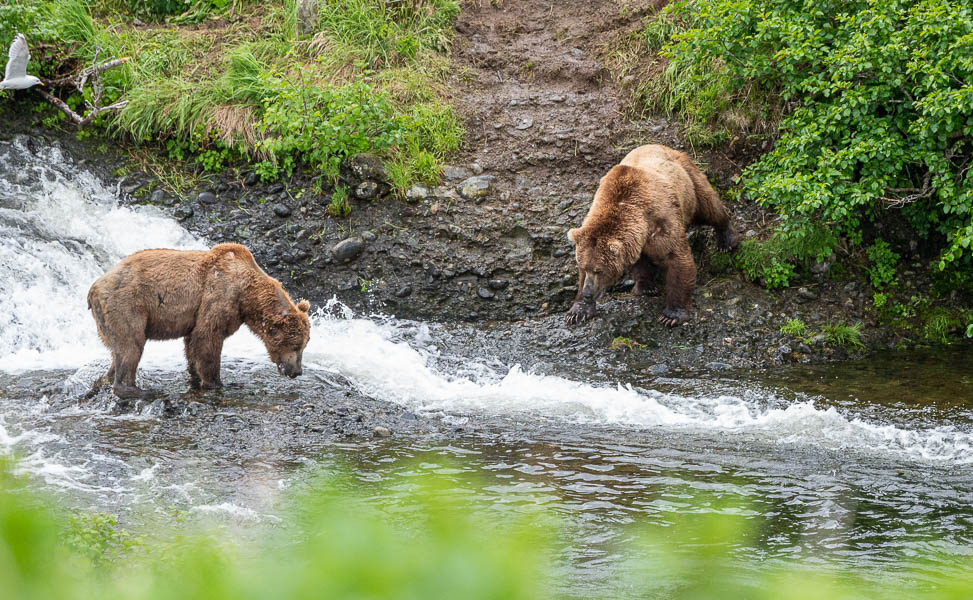
In the photo above, the bear on the right is clearly larger, but the one on the left decided to push the issue. It didn’t go well for him.
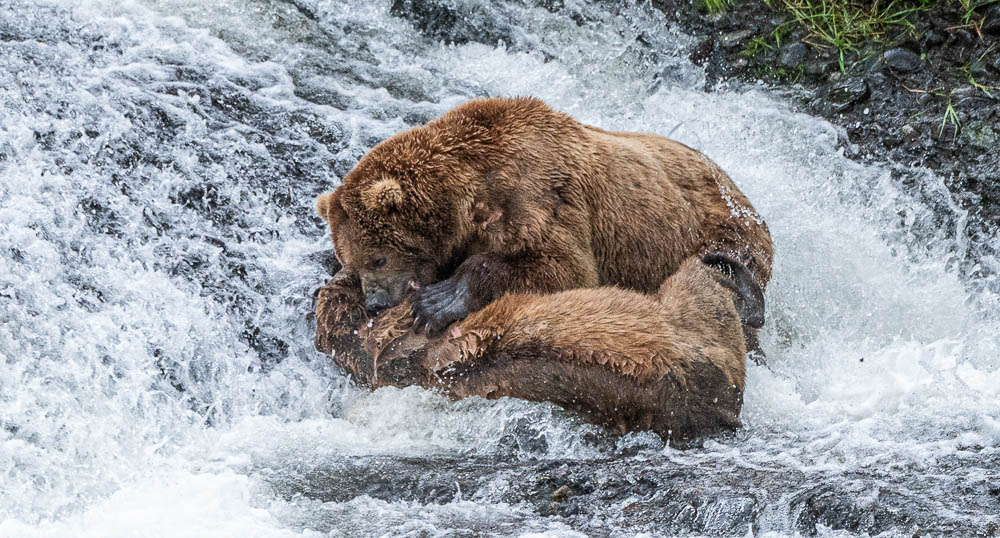

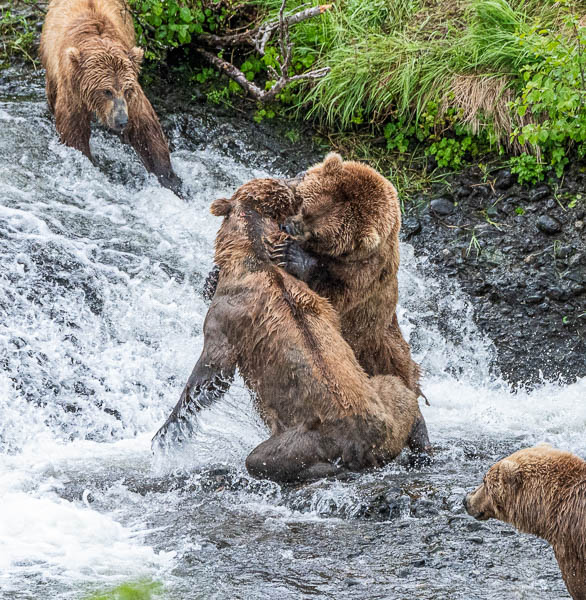
At this point in the fight, the bigger bear pushed the smaller one onto his back, into some rocks on the shore below us. I switched to video and caught the end of the fight, as well as a little of some other bear behaviors. In the video, you can see the fresh scars on the smaller bear’s hindquarters from the rocks.
Meanwhile, other bears were fishing while the big boys were wrestling, occasionally deciding that it was easier to take someone else’s fish than catch their own.
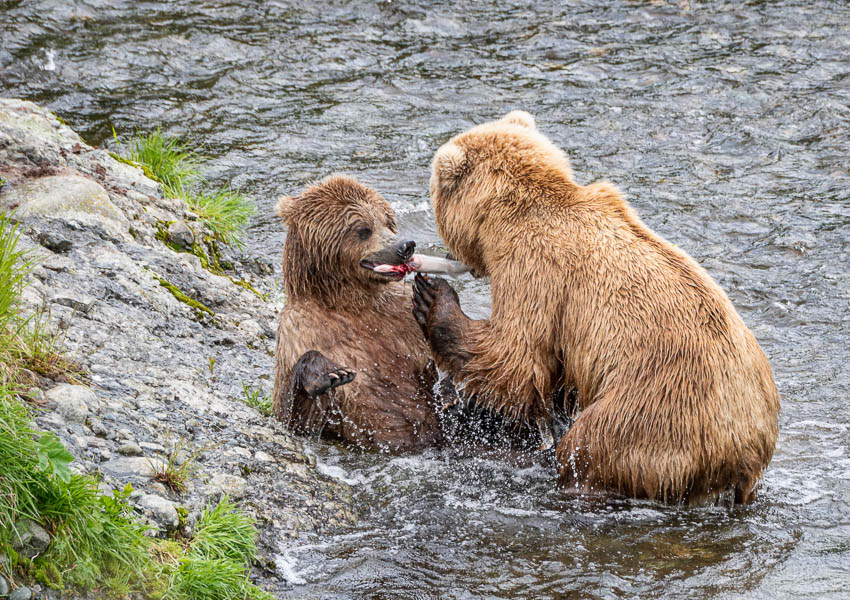
There were plenty of bald eagles standing by to pick up scraps, as close as the bears would tolerate. Often the count of bears was matched by an equal number of eagles.
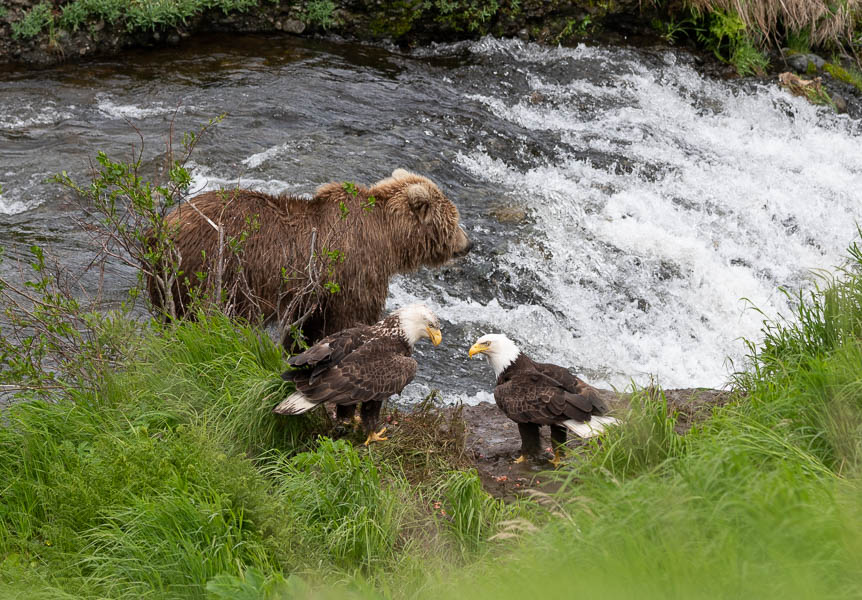
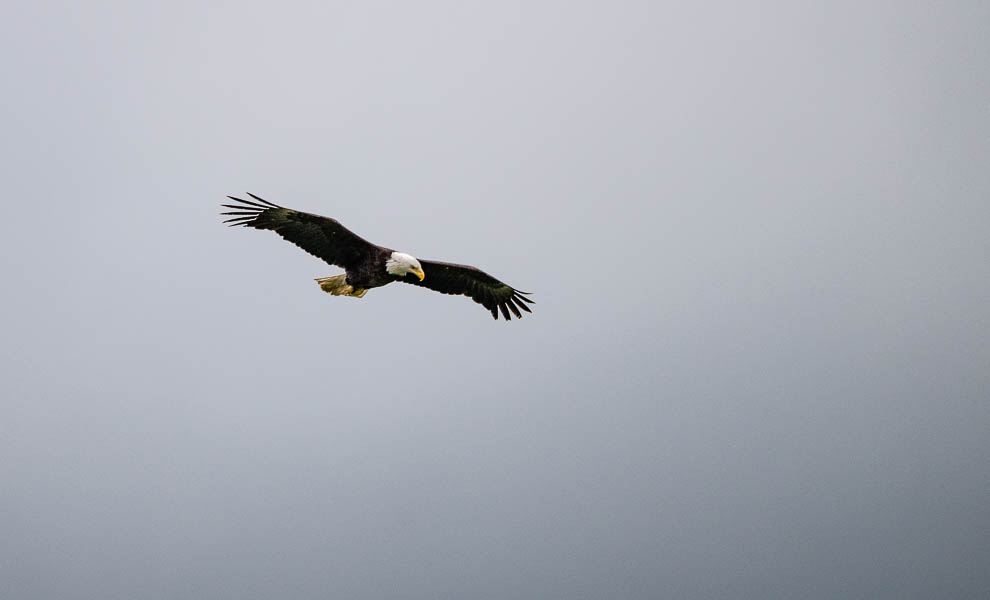

There was activity to watch in all directions – down in the falls, up on the hill, next to us, behind us… bears were always watching, sniffing the air, and shifting position to maintain the social pecking order.
There’s so much more to show you – so many more bears. In a typical day we saw 20+ different individuals near camp, on the trail, or up at the falls, but we often saw only 5-6 bears at a given time. I’ll post more about McNeil’s bears – stay tuned. It’s so difficult to choose just a handful of photos from all that we saw in four and half days.
